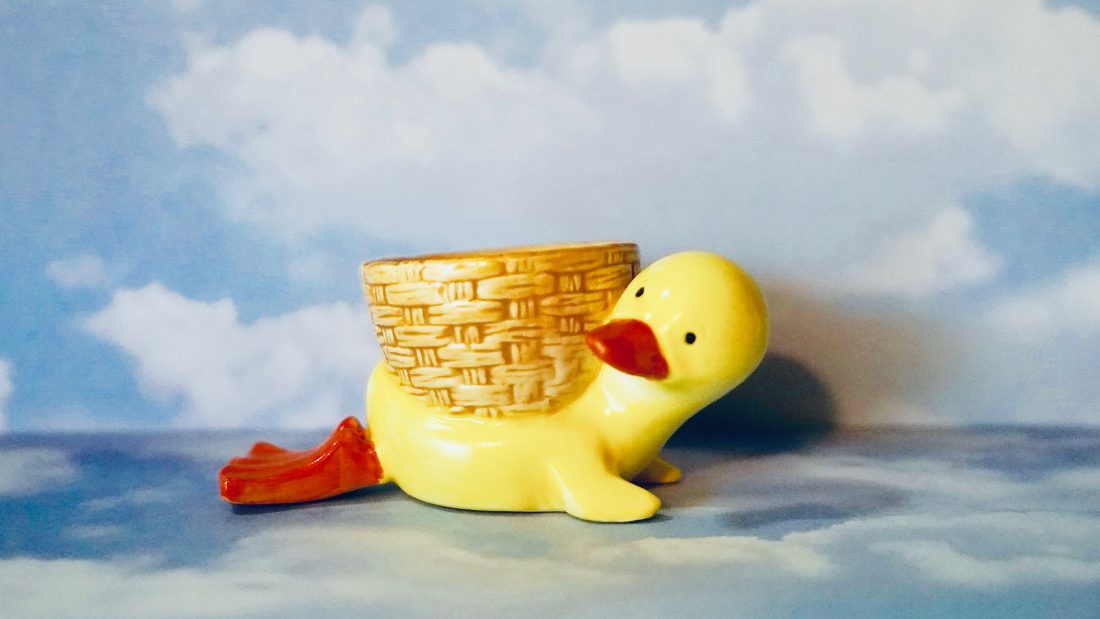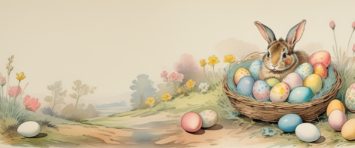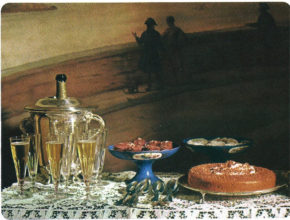Egg cups are exactly what you’d think, a little cup that holds a boiled egg so that the rolly little bugger stays put while you eat it. The egg stays in the shell and the top is cut off with a knife or a fancy egg nipper. Small egg spoons were made as well, though many of these are sterling and therefore useless as they taint the taste of the egg and can be oxidized by the hydrogen sulfide in egg whites. The finest, (and most useful) of these have vermeil coatings or are made of bone or mother of pearl.
Egg cups have been around for thousands of years and are really one of the earliest examples of specialized table wear. Images of egg cups are dated to 3 A.D. in the ruins of the city of Pompeii and Turkish mosaics show both still lives with egg cups and people using eggcups.
Oddly, egg cups seem to slowly disappear from tables after the Romans and aren’t brought back into common use until the Elizabethan period. Stunning silver and gilt examples of egg cups can be found from this period, and once the British aristocracy began to mimic royalty and ate their eggs out of silver egg cups, it wasn’t long before the lower classes began to mimic their betters and wooden egg cups begin to be seen.
In 1700’s France, the Sevres porcelain company produced very fine porcelain egg cups and even porcelain incense burners that could be converted into egg steamers to be used in ones’ private apartments when one was peckish. I saw one of these at the Sevres factory outside of Paris and they are beautiful in the extreme. I would want one if they didn’t cost as much as a luxury car. Eggs were a common dish in Eighteenth Century France. Louis XV used egg cups regularly during his meals and entertained his courtiers by beheading the egg in his eggcup with one slice. He obviously didn’t know how ironic this would become.
Later, during the Regency, silver cruet sets with egg cups and spoons began appearing on the tables of the merely wealthy, as opposed to the Royal and fabulously wealthy. The sets usually had four to six egg cups set into a stand. Porcelain versions of this can be seen as well.
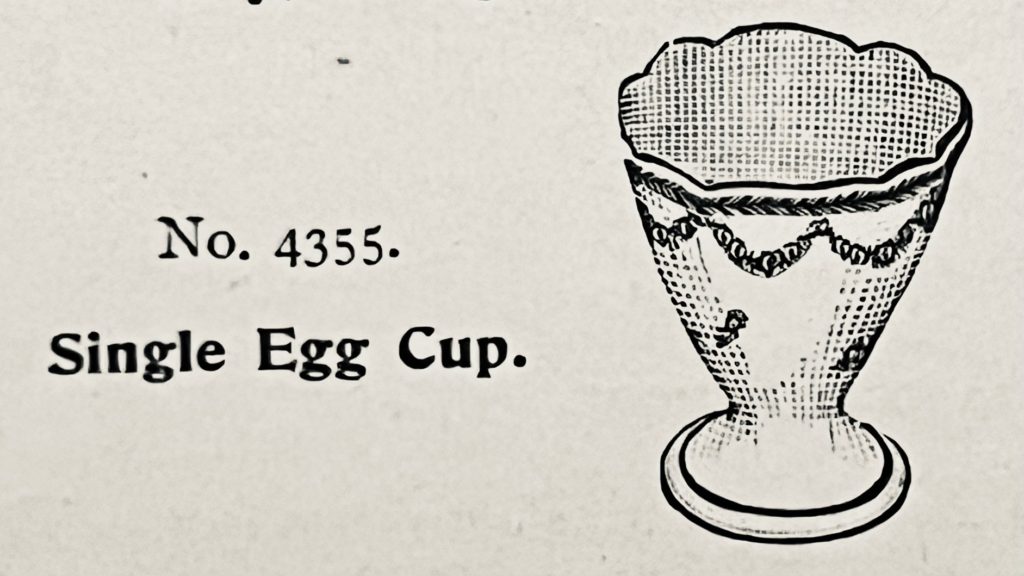
As with most things in china, the Victorians really perfected and mass-produced egg cups. At this point, all the major china makers began producing egg cups to match their china services. Egg cups in silver were made with lids and in figural designs with chicks and roosters. The Victorians also sold porcelain eggcups in sets from six to twelve egg cups with a matching tray and spoons. Most regular folk did not have egg cups, though there are some wood, treen and papier mache versions to be found that must have been manufactured for the middle and lower classes. There are also treen and silver versions that come apart for travel.
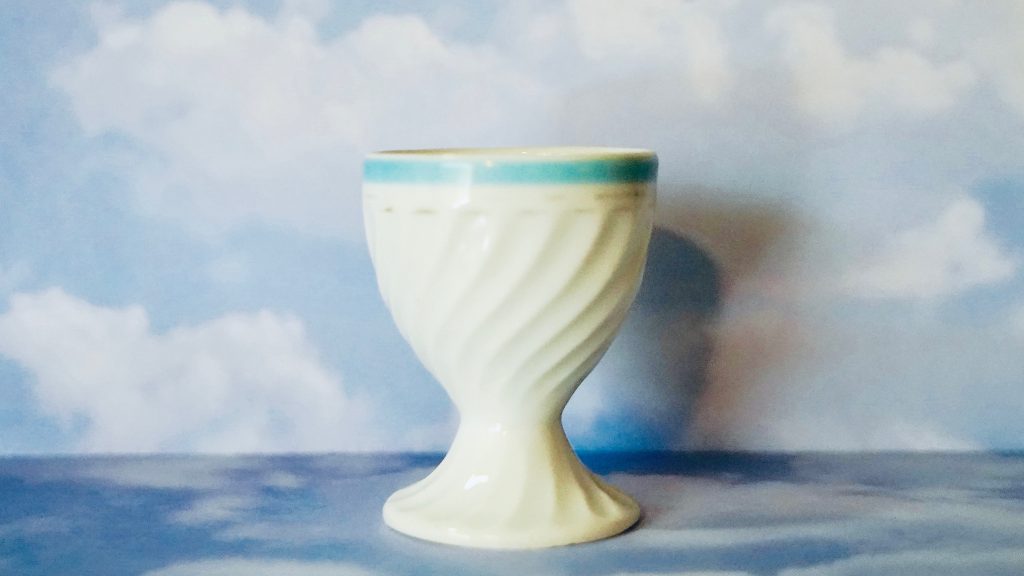
During this period the double egg cup begins to be made. The double egg cup serves two purposes. They have a small egg cup opening on the top for the boiled egg, but also a larger cup on the bottom that can be used to serve scrambled eggs or shirred eggs. Snobs will point out, this was a selling point used by porcelain makers to entice the middle class, as the rich had ramekins and specialized dishes for most meals and wouldn’t need dishes with second purposes. Some claim the larger cups originally served the purpose of keeping a second boiled egg warm under its’ porcelain cover until the egg on top was consumed and the diner was ready for another.
I can’t find a definitive answer to this, but I do know that there were many stunning and expensive double egg cups made during the 19th century, so some of the chichi-poopoo deigned to have them on their tables.
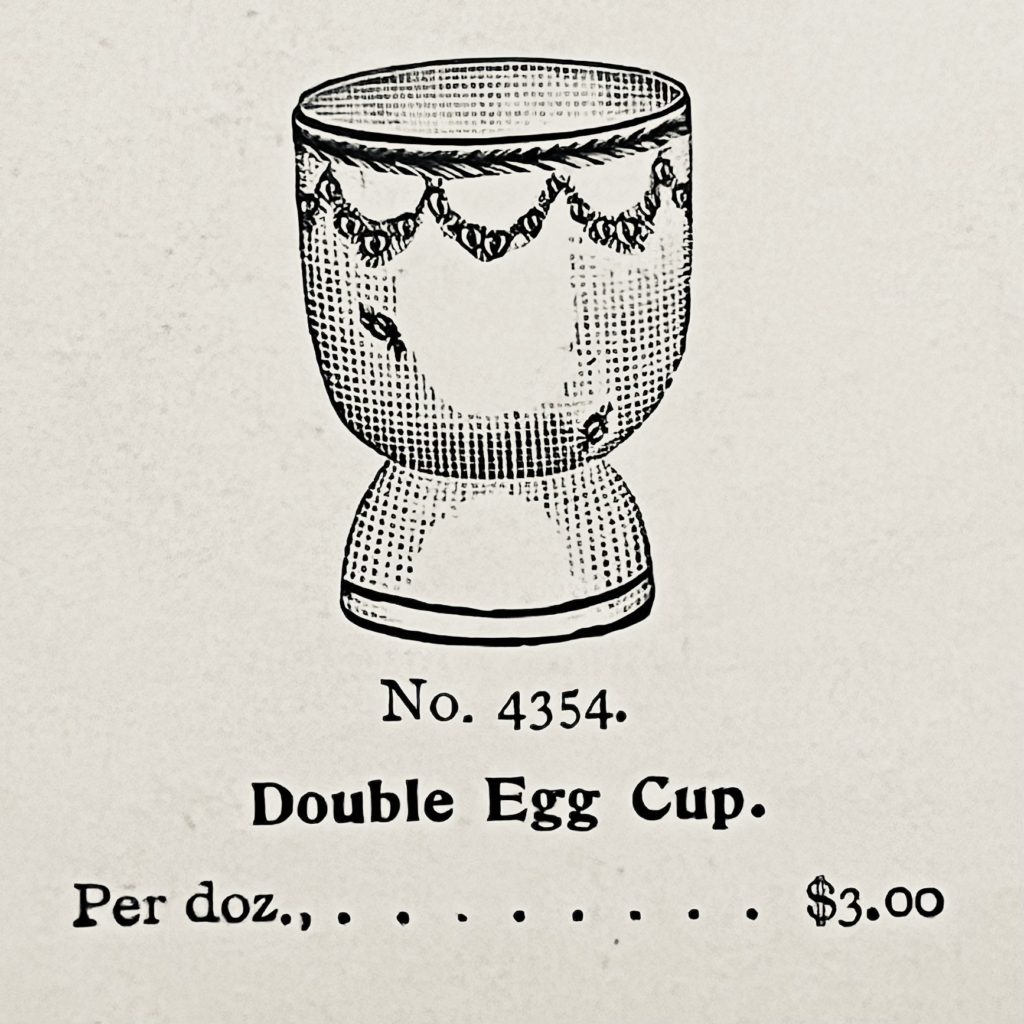
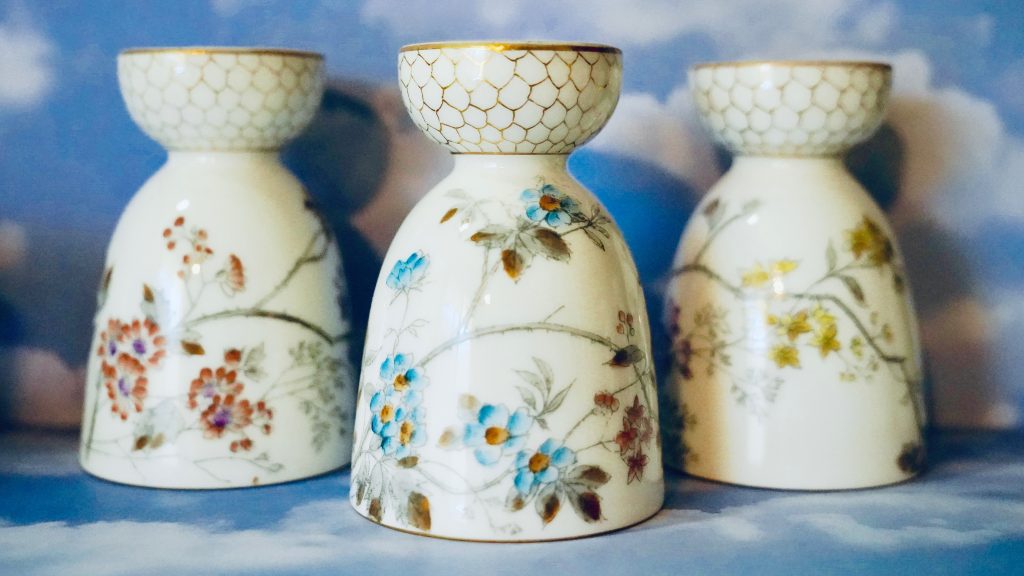
In the 20’s egg cups began to take on more modern shapes. Small modern cups with no feet, little dishes with room for two cups and a small space for shells. Matched sets with egg cup and toast rack for egg and soldiers.
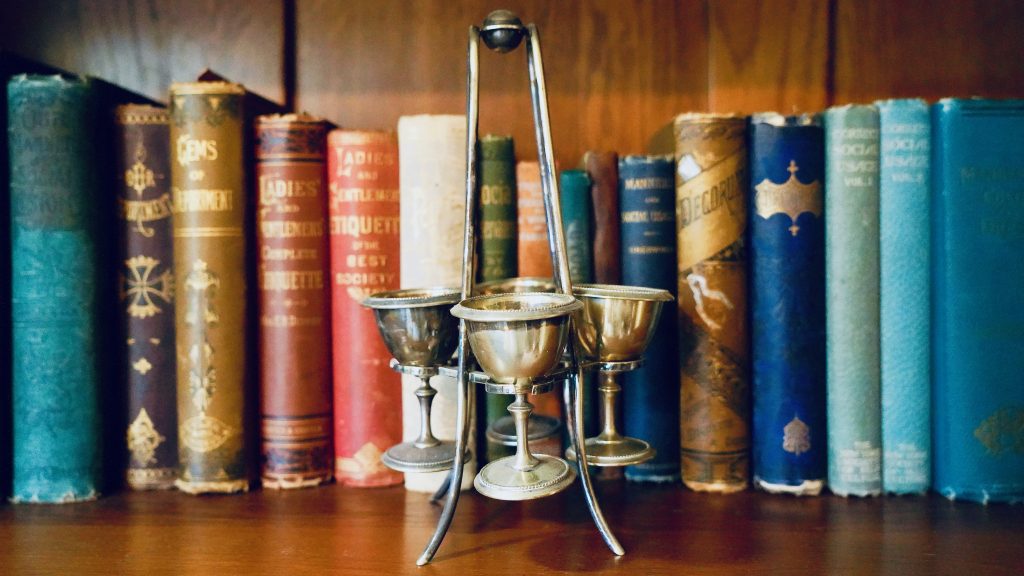
The Victorians began the novelty egg cup. Cups shaped as elephants or roosters abounded, but in the early mid-twentieth century, companies began gearing novelty egg cups for children with cutesy animal shapes and faces. The novelty cup really reach their apex between the 30’s to the 50’s with adorable bears, bunnies and faces. Breakfast tray sets from this period also contain egg cups with matching toast rack, cup, saucer, tea/coffeepot, creamer, sugar and vase.
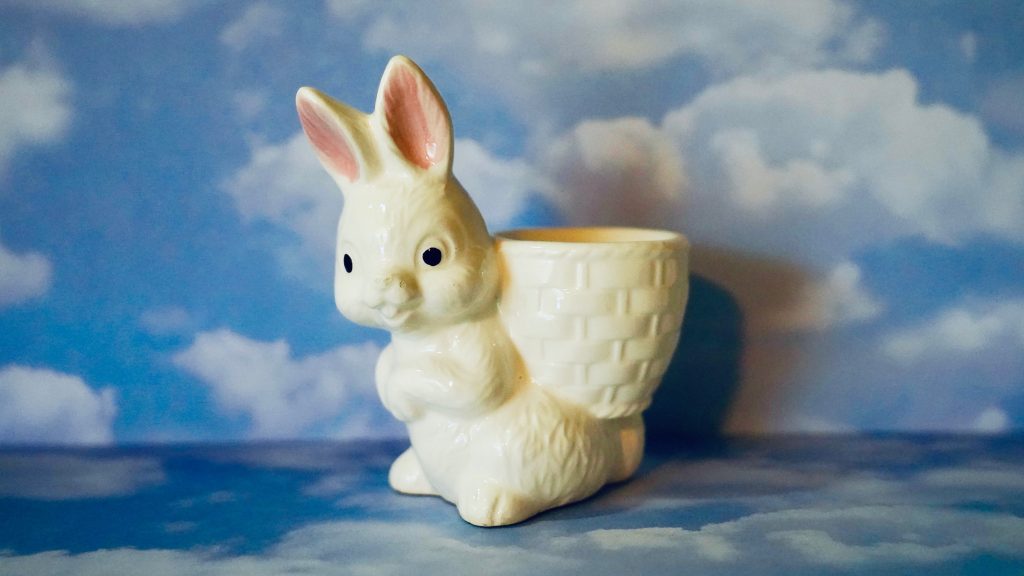
Mid-century egg cups can be found in bakelite and even chalkwear. In the 60’s plastic egg cups became ubiquitous for everyday use.

Egg cups are not as popular in the US as they are in Europe. There, egg cups are still produced by most china manufacturers and can also come in wood, stone and plastic.
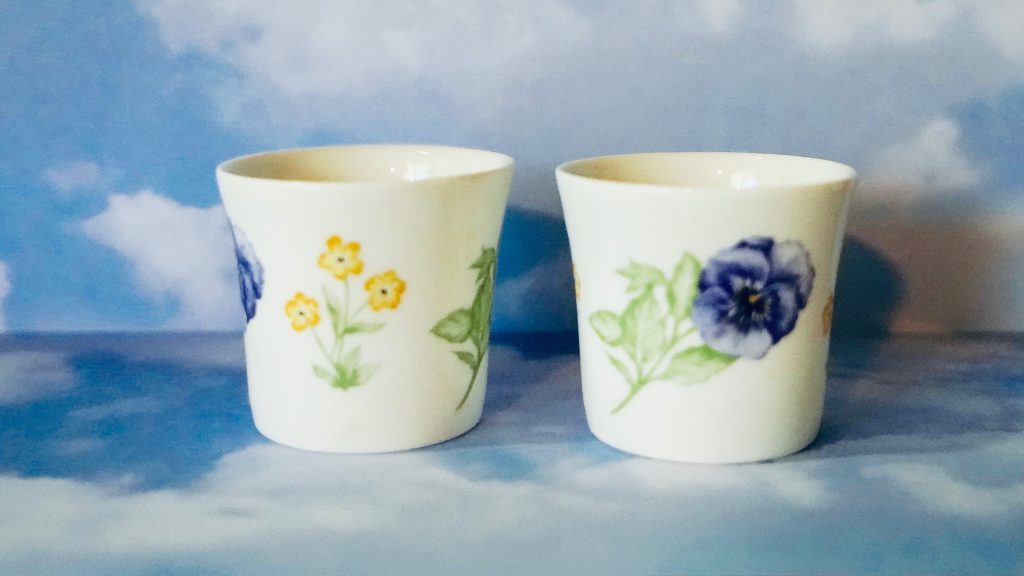
I’m not going to tell you prices or anything like that as I’m not an expert by any stretch, but these are delightful little collectables that generally do not cost much and what a lovely way to liven up the breakfast table.
Fun Fact: An egg cup collector is a pocillovist.
So, do you like a boiled egg? I must admit I love both hard and soft boiled eggs. I like dijon mustard with the hard boiled variety and buttered soldiers with my soft.
Given that we’re all trapped in our houses, maybe a special breakfast with soft boiled eggs is in order. I’m wishing you well, much love, Cheri
